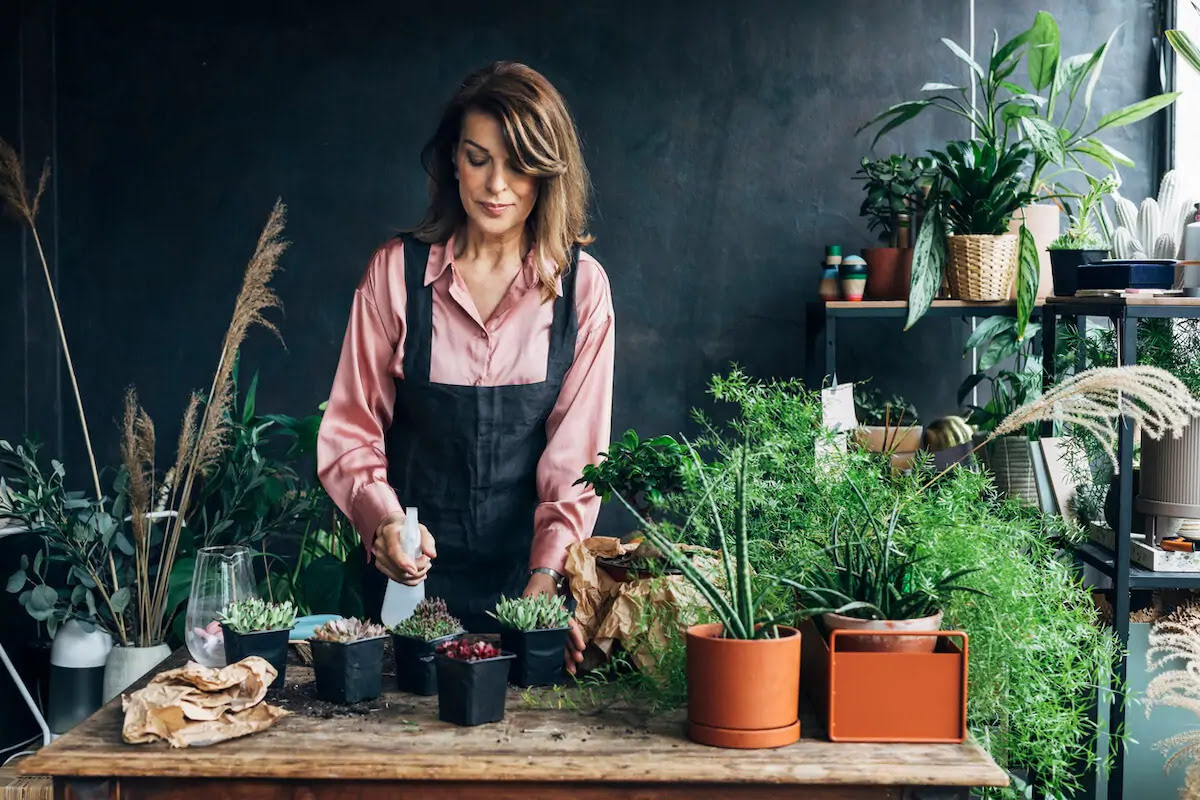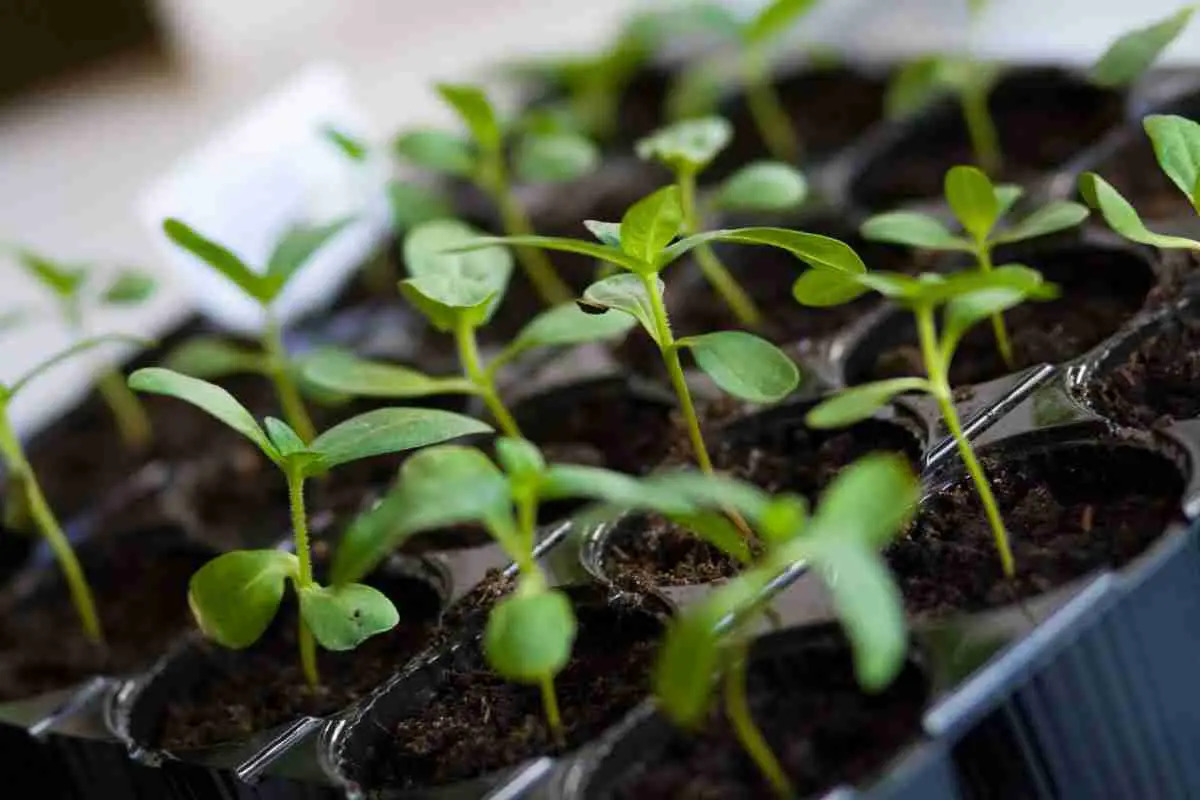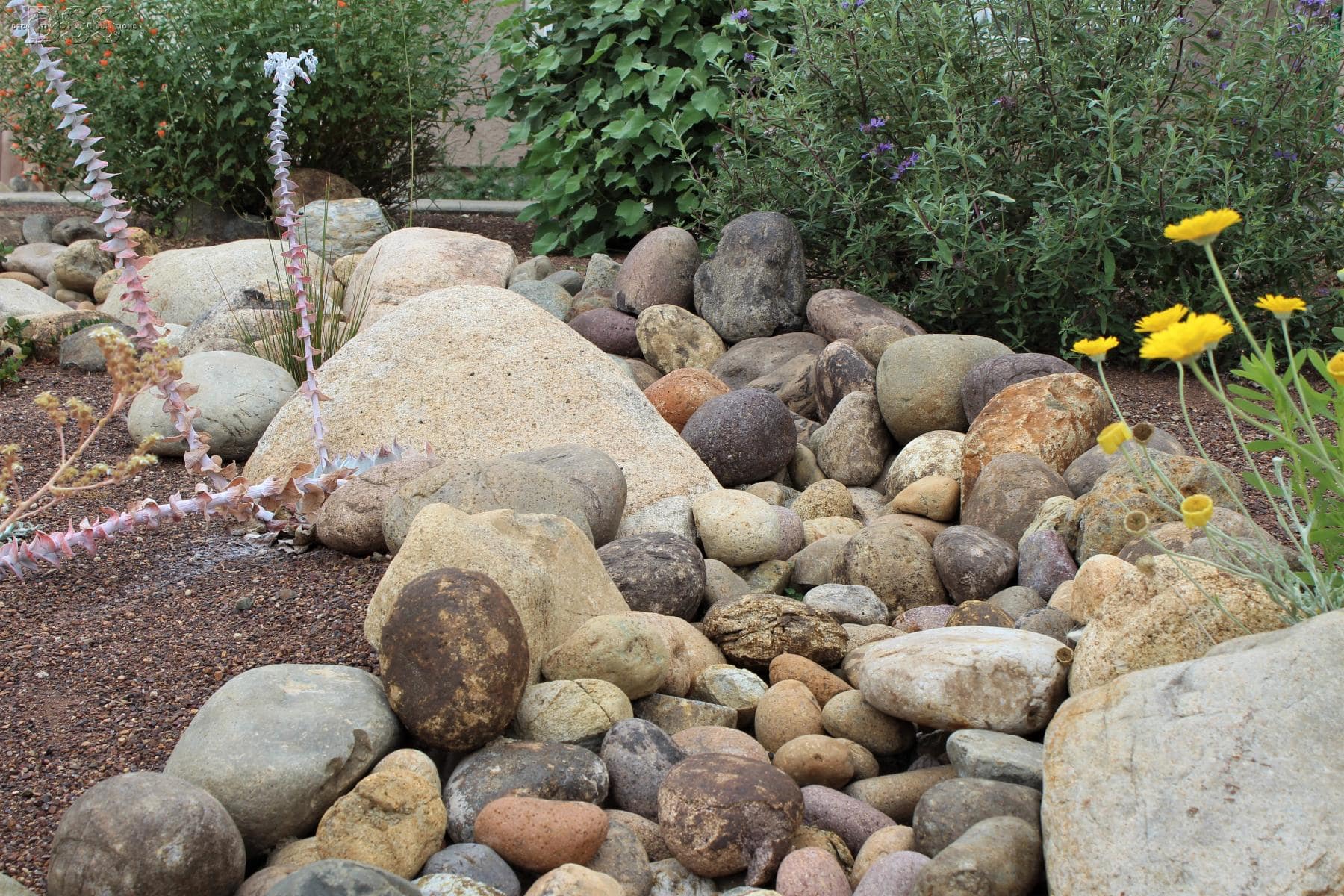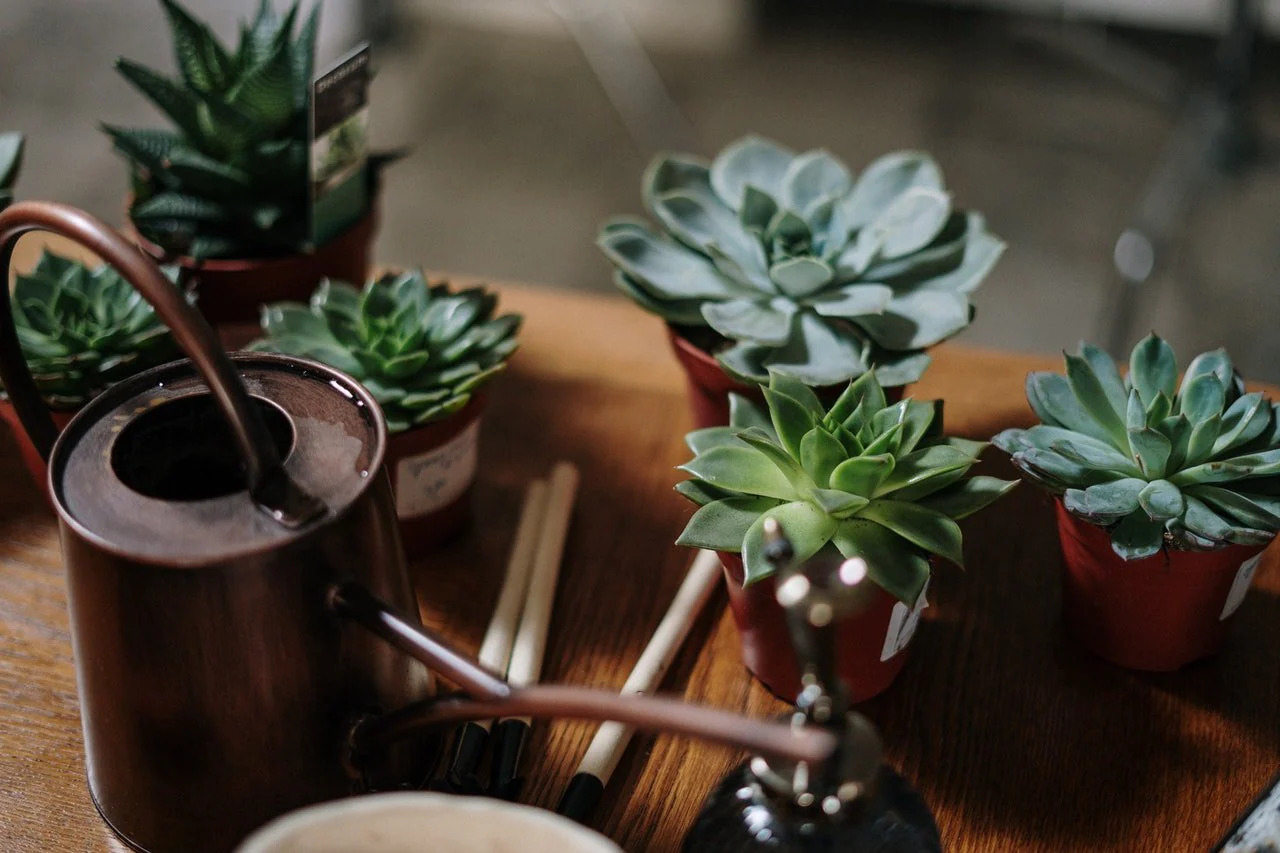Home>Gardening Techniques>Plant Care>How Much Water Do Succulents Need Indoors


Plant Care
How Much Water Do Succulents Need Indoors
Published: December 26, 2023
Discover the essential plant care tips for succulents indoors, including how much water they need to thrive. Learn the best watering practices for healthy succulent growth.
(Many of the links in this article redirect to a specific reviewed product. Your purchase of these products through affiliate links helps to generate commission for Chicagolandgardening.com, at no extra cost. Learn more)
Table of Contents
**
Introduction
**
Welcome to the wonderful world of indoor succulent care! Whether you're a seasoned plant enthusiast or just starting your green journey, understanding the unique watering needs of succulents is crucial for their thriving growth. These charming plants have gained immense popularity due to their striking appearance and low-maintenance nature, making them perfect companions for both seasoned gardeners and beginners.
Succulents, with their fleshy leaves and stems, have adapted to survive in arid environments with infrequent rainfall. This adaptation allows them to store water efficiently, making them well-suited for indoor environments where consistent watering can be a challenge. However, despite their resilience, providing the right amount of water is essential for their overall health and vitality.
In this comprehensive guide, we will delve into the fascinating world of indoor succulents and explore the factors that influence their watering needs. Understanding the signs of overwatering and underwatering, as well as mastering the art of watering techniques, will empower you to create an optimal environment for your beloved succulents. So, let's embark on this enlightening journey and unlock the secrets to keeping your indoor succulents thriving and beautiful.
**
Understanding Succulents
**
Succulents, encompassing a diverse range of plant species such as Echeveria, Aloe, and Haworthia, are renowned for their ability to store water in their leaves, stems, or roots. This unique adaptation allows them to survive in arid and semi-arid regions where water is scarce. When cultivated indoors, succulents bring a touch of natural elegance to any space, adding a refreshing aesthetic appeal.
One of the defining characteristics of succulents is their thick, fleshy leaves or stems, which serve as reservoirs for storing water. This feature sets them apart from other houseplants and influences their watering requirements. Unlike traditional foliage plants, succulents have evolved to endure periods of drought, making them particularly well-suited for indoor environments where consistent watering can be challenging.
Furthermore, succulents are categorized as either desert or jungle varieties, each with distinct water storage capabilities. Desert succulents, such as cacti, typically have a higher capacity to store water in their tissues, allowing them to thrive in extremely dry conditions. On the other hand, jungle succulents, like certain species of Aloe, have adapted to more moderate moisture levels, reflecting their natural habitat in tropical and subtropical regions.
Understanding the natural habitat and water storage mechanisms of succulents is fundamental to providing them with the optimal care they need to flourish indoors. By recognizing their unique characteristics and evolutionary adaptations, you can cultivate a deeper appreciation for these remarkable plants and ensure their well-being in your indoor space.
**
Factors Affecting Watering Needs
**
The watering needs of indoor succulents are influenced by various factors, each playing a crucial role in determining the frequency and quantity of water they require. Understanding these factors is essential for creating an optimal watering regimen that promotes the health and vitality of your beloved succulents.
One of the primary factors affecting succulent watering needs is the environmental conditions within your home. Factors such as temperature, humidity levels, and air circulation directly impact the rate of water evaporation from the soil and plant tissues. In warmer and drier environments, succulents may require more frequent watering to compensate for the increased moisture loss. Conversely, in cooler and more humid conditions, watering frequency may be reduced to prevent overhydration.
The type of soil and the potting container also play a significant role in determining the watering needs of succulents. Well-draining soil mixes specifically formulated for succulents and cacti are essential for preventing waterlogged conditions, allowing excess moisture to escape and reducing the risk of root rot. Additionally, choosing pots with drainage holes promotes healthy root development and prevents water from accumulating at the bottom of the container.
The growth stage of succulents is another factor to consider when assessing their watering requirements. During active growth periods, such as spring and summer, succulents may require more frequent watering to support their metabolic processes and new growth. In contrast, during dormancy in fall and winter, watering frequency should be reduced to mimic their natural growth cycle and prevent water-related stress.
Lastly, the individual species and varieties of succulents exhibit unique water storage capacities and tolerance levels. While some species, such as Lithops, have evolved to survive extended periods of drought and require minimal watering, others, like certain types of Sedum, may have higher moisture requirements due to their natural habitat and physiological characteristics.
By considering these factors and observing the specific needs of your indoor succulents, you can tailor your watering practices to create a harmonious environment that promotes their overall well-being and longevity.
**
Signs of Overwatering and Underwatering
**
Understanding the signs of overwatering and underwatering is crucial for maintaining the health and vitality of indoor succulents. By recognizing these indicators, you can adjust your watering practices to ensure optimal growing conditions for your beloved plants.
Signs of Overwatering:
-
Wilting and Yellowing: While it may seem counterintuitive, overwatered succulents can exhibit wilting and yellowing leaves as a result of root rot. The excessive moisture in the soil suffocates the roots, leading to a decline in overall plant health.
-
Soft and Translucent Leaves: Overwatered succulents may develop soft, translucent leaves due to cellular damage caused by waterlogged conditions. The leaves may appear swollen and feel mushy to the touch.
-
Foul Odor: A musty or rotten odor emanating from the soil is a telltale sign of overwatering and potential fungal or bacterial growth. This odor indicates that the soil is excessively moist and lacking adequate aeration.
-
Leaf Drop: Overwatered succulents may experience leaf drop as a response to stress and impaired root function. The leaves may detach easily or show signs of yellowing and browning before falling off.
Signs of Underwatering:
-
Shriveling and Wrinkling: When succulents are underwatered, their leaves and stems may start to shrivel and develop wrinkles. This is a survival mechanism to conserve water and indicates that the plant is experiencing moisture stress.
-
Dull and Dry Appearance: Underwatered succulents may appear dull and dry, with a lackluster sheen on their leaves. The foliage may lose its plumpness and exhibit a slightly deflated appearance.
-
Slow Growth and Stunted Development: Insufficient water can hinder the growth and development of succulents, causing them to remain smaller in size and exhibit minimal new growth.
-
Leaf Curling: Underwatered succulents may display leaf curling as a protective measure to reduce water loss through transpiration. The leaves may curl inwards or appear flattened as the plant attempts to minimize moisture evaporation.
By familiarizing yourself with these signs, you can promptly address watering imbalances and provide your indoor succulents with the care they need to thrive. Observing and responding to these indicators will empower you to establish a harmonious watering routine that promotes the well-being of your cherished plants.
**
Watering Techniques for Indoor Succulents
**
Mastering the art of watering is essential for nurturing healthy and vibrant indoor succulents. By employing effective watering techniques, you can create an environment that supports optimal growth while preventing common issues associated with overwatering and underwatering.
1.**
**
**
-
**
-
**
-
**
2.
**
-
**
-
**
-
**
3.
**
Conclusion
**
Caring for indoor succulents is a rewarding and fulfilling endeavor that allows you to cultivate a thriving oasis of natural beauty within your home. By gaining a deeper understanding of succulents and their unique watering needs, you can embark on a journey of nurturing these resilient plants with confidence and expertise.
From the factors influencing watering requirements to the telltale signs of overwatering and underwatering, each aspect of succulent care contributes to the holistic well-being of these captivating plants. By considering environmental conditions, soil composition, growth stages, and species-specific traits, you can tailor your watering practices to create an optimal habitat for your indoor succulents.
As you refine your watering techniques, remember that moderation and mindfulness are key. Striking a balance between hydration and restraint will empower you to provide your succulents with the essential moisture they need while safeguarding them from the perils of excessive watering. By observing and responding to the subtle cues of your plants, you can fine-tune your approach and establish a harmonious watering regimen that nurtures their growth and vitality.
Embracing the art of succulent care is a journey of continuous learning and adaptation. As you cultivate a deeper connection with your indoor succulents, you will develop an intuitive sense of their needs and preferences, fostering a nurturing environment where they can thrive and flourish. With each tenderly administered drop of water, you contribute to the flourishing tapestry of life within your home, creating a sanctuary of natural splendor that uplifts the spirit and enriches the soul.
So, as you embark on this botanical odyssey, may your indoor succulents grace your living spaces with their timeless allure, serving as steadfast companions on your green-fingered voyage. With mindful watering and attentive care, your succulents will stand as resilient testaments to the beauty of nature, inspiring awe and admiration with every verdant leaf and delicately blooming flower.







